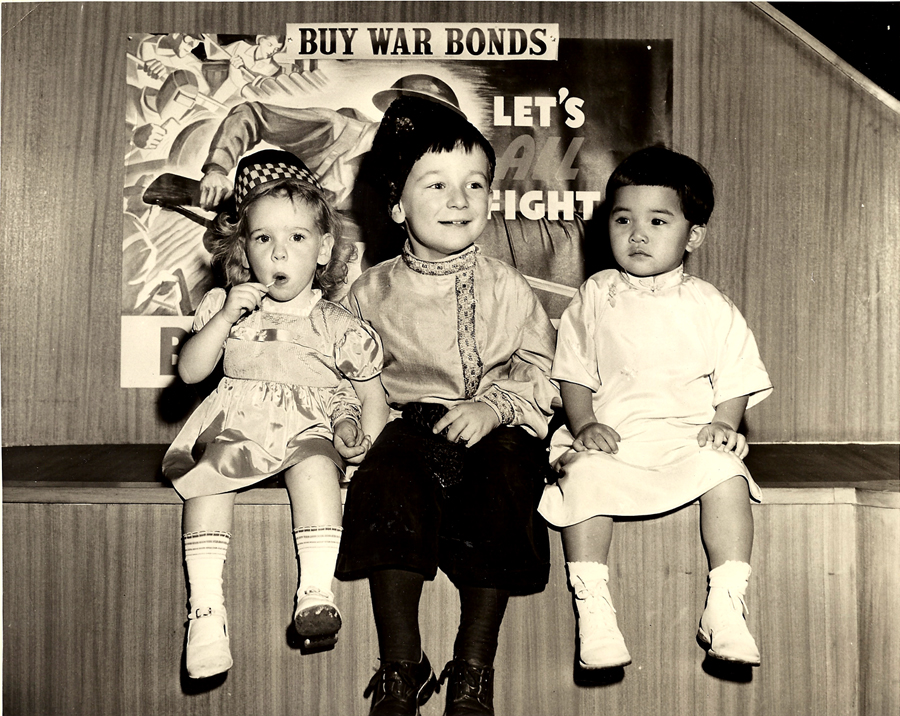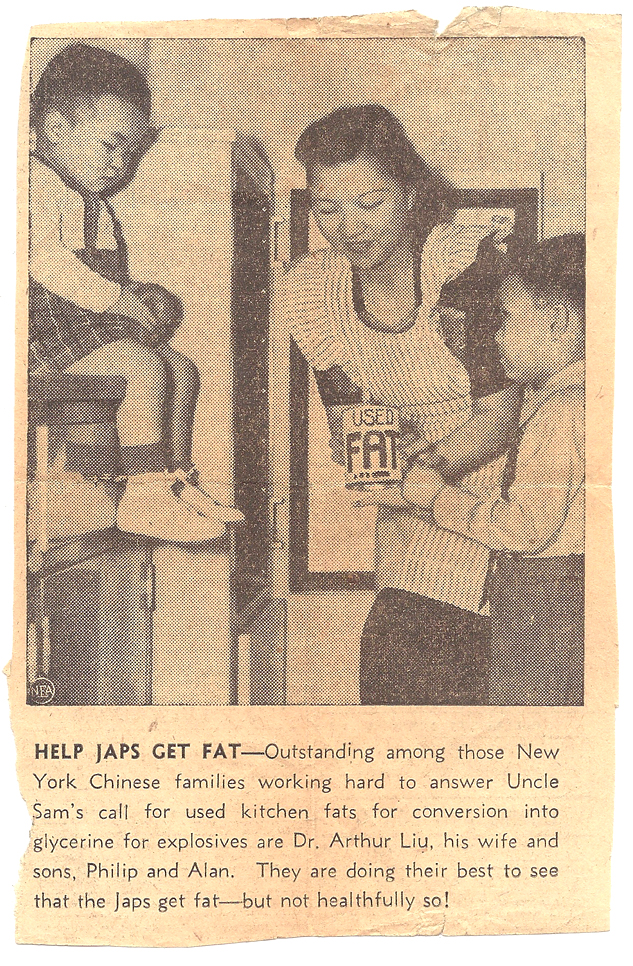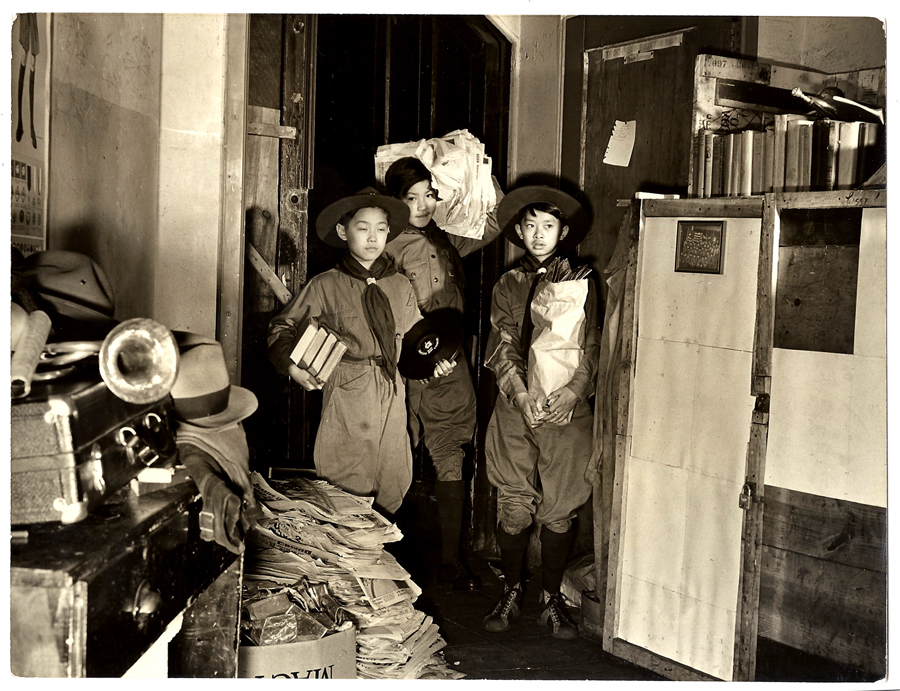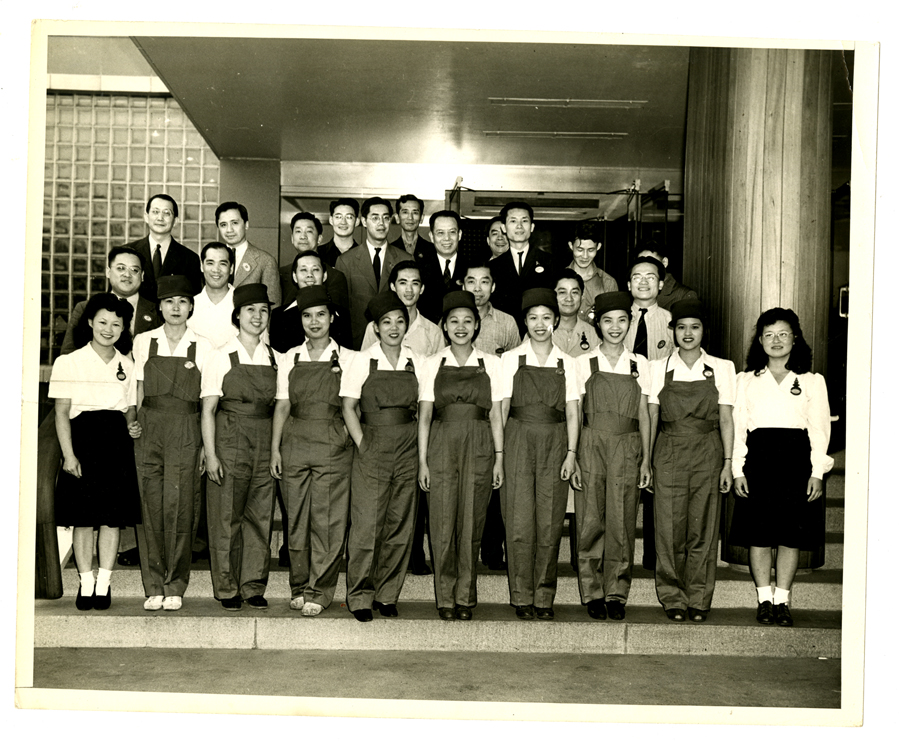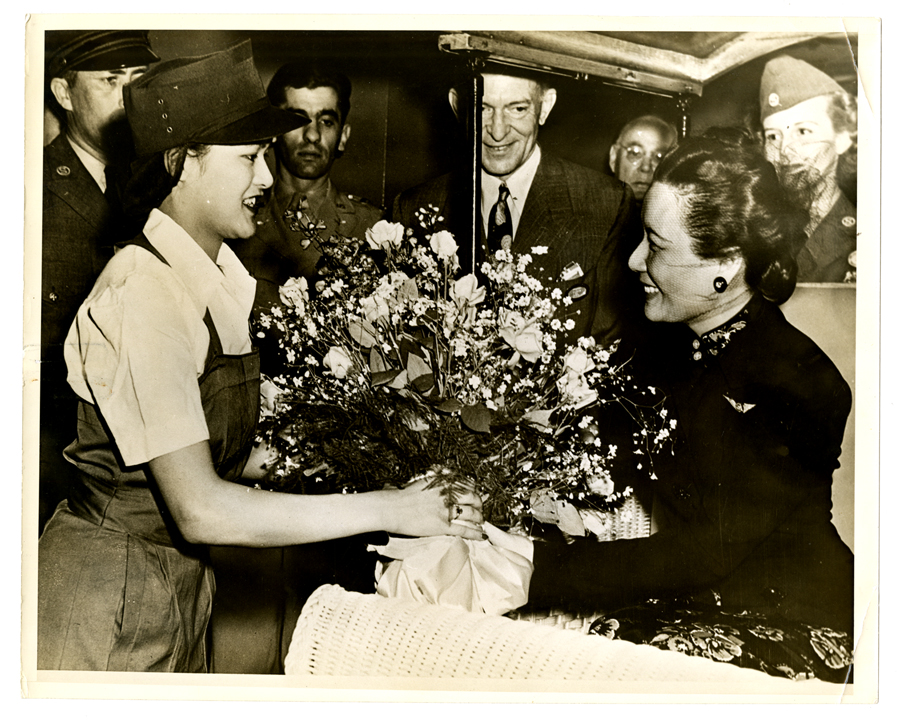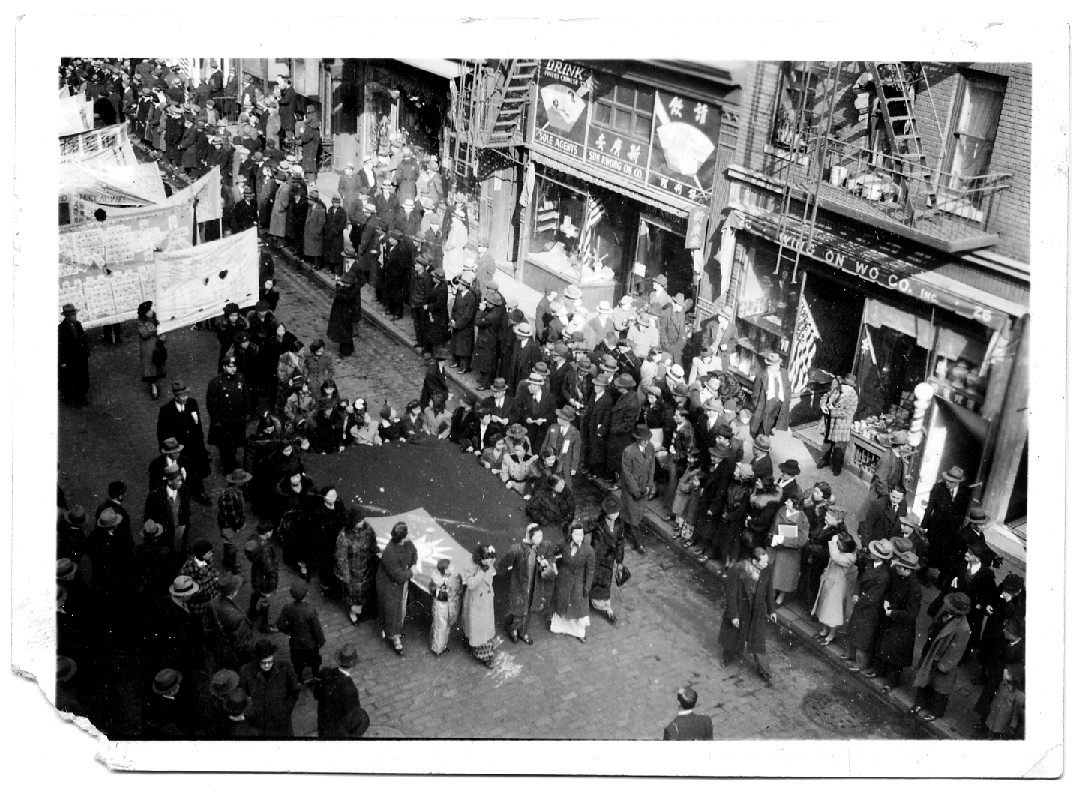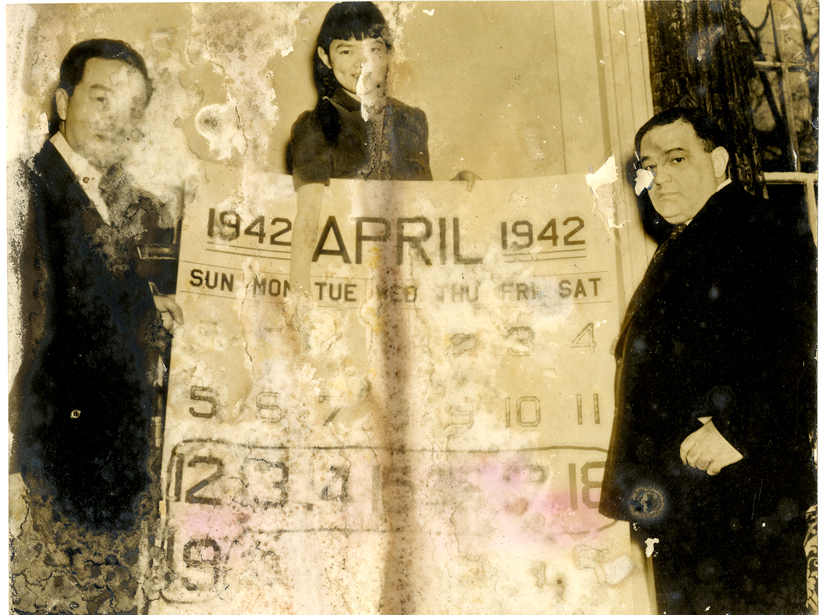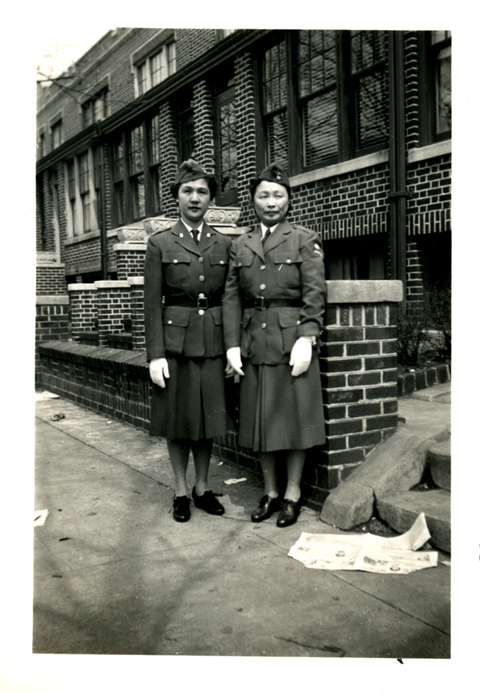Transitioning to war production to serve as the Allied Forces’ “Arsenal of Democracy” required mass mobilization and sacrifice from every person and local community on the home front. Many in the New York Chinatown community had family in China and had been supporting the defense of their homeland against Japanese aggression since the 1930s. As such, they had a particularly personal and heavy stake in the outcome of World War II, and as the following photographs document, made significant contributions to the war effort. Even babies played a part, as did Virginia Chin (née Lee) of 73 Mulberry Street, who was one of three children chosen by artist Margery Ryerson to be models for paintings used by the Ninth Federal Savings and Loan Association to boost the sale of war bonds.
War production-induced shortages necessitated not only rationing of consumer products but also citizen participation in salvaging and recycling a wide range of previously discarded material. Chinese American families in New York such as the Liu’s depicted in the newspaper clipping answered Uncle Sam’s call for used kitchen fats for conversion into glycerine for explosives, while Chinatown Boy Scout Troop 150 “performed its generous share in all the salvage campaigns to aid the war effort,” including collecting waste paper, metal, and rubber, as well as gathering old records and books for use by the Army and Navy.
Chinese American women such as Helen Typond assumed the role of a “Rosie the Riveter,” operating a lathe metalworking machine at a Nassau County war plant visited by Madame Chiang Kai-Shek in 1943. They also donned American Women’s Voluntary Services (AWVS) uniforms, and as part of that organization, gave generously of their time to sell war bonds, staff the American Red Cross, work in emergency soup kitchens, serve as message couriers, and aid in fire fighting.
Chinese American New Yorkers also fundraised considerable amounts to aid soldiers and civilians in China. The last two photographs depict two such efforts. In the second to last, Marilyn Chou, who was 9 years old at the time, stands in-between Mayor Fiorello LaGuardia (right) and Dr. Tsune-chi Yu, the Chinese Consul General in New York City. She points to the third week on a calendar of April, 1942, helping to promote a week set aside as CHINA WEEK, during which the city planned to raise $1,750,000 for China. The last photograph shows a bird’s eye view of marchers on Mott Street in February 1943 carrying a giant Chinese national flag in a “Bowl of Rice” parade raising funds for children affected by the war against Japan in China.
In addition to these contributions on the home front, nearly 14,000 or 22 percent of all men of Chinese descent in the United States fought in the U.S. armed forces during World War II.
